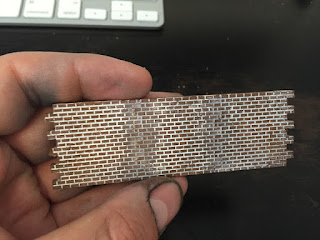
What you see here is the first prototype row house, that I constructed to test some Linka molds and a new type of plaster. Before embarking on a significant project, I like to test the waters with some prototypes. I learned quite a few things this time around.
- Garrecco plaster is vastly better than Magic Merlin. It takes a full day to become rock hard, but it can be de-molded in 30 minutes.
- Garrecco needs a thin coat of watered down white glue to provide a good surface for painting.
- Floors can be easily poured into each level using masking tape. Once dry, the piece is solid.
- Linka molds are wonderful for their lego-like quality, but require so many pours of plaster that it becomes numbing. It would be better if I had duplicates of the most important molds.
- An entire city built this way would take a long time if I did not make molds of semi-completed buildings.
I am very pleased with the results and will be using Linka and Garrecco to make additional buildings. These will be split into roughly two camps. I'll be making factory buildings, office buildings, and larger apartment buildings for industrial tables, and then row houses, shops, corner buildings, and assorted small town stuff for villages and city outskirts. In a dream version of this, I'd be able to cast whole buildings with a single pour. That would drastically increase throughput and let me build larger table sections.












































